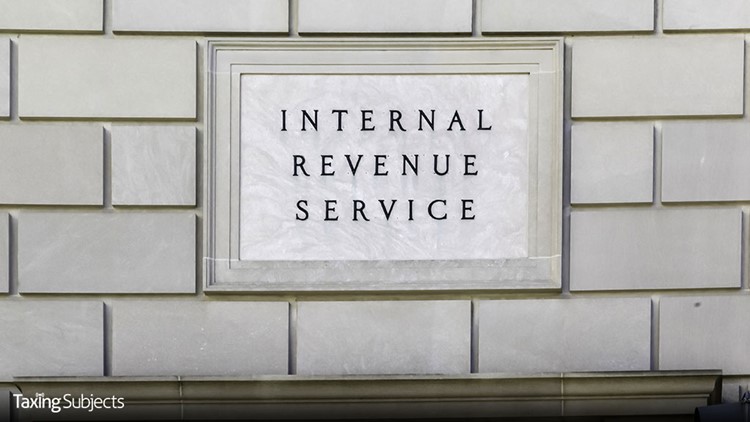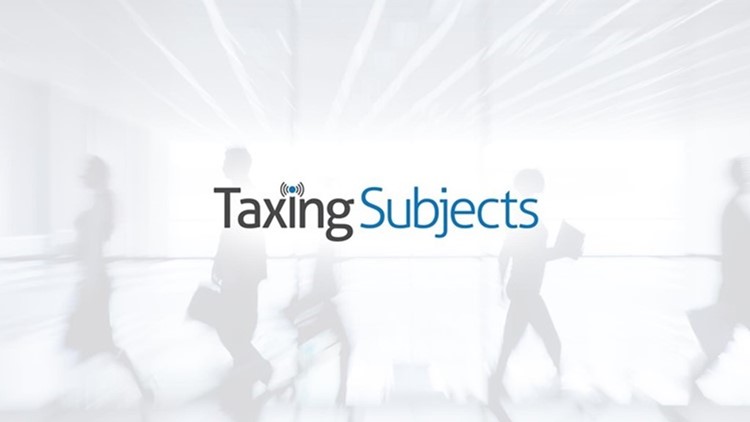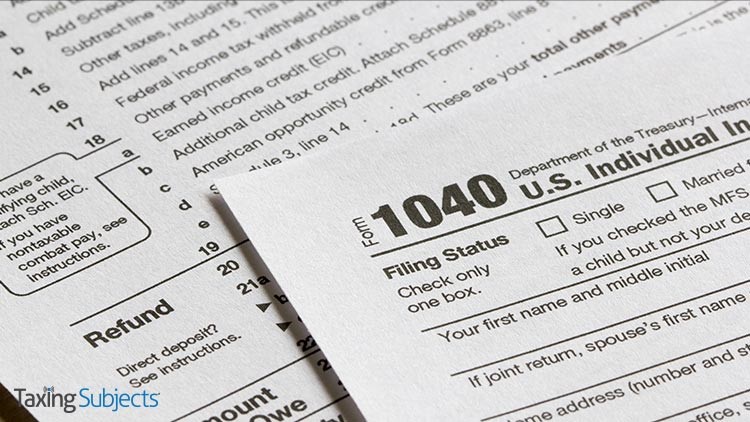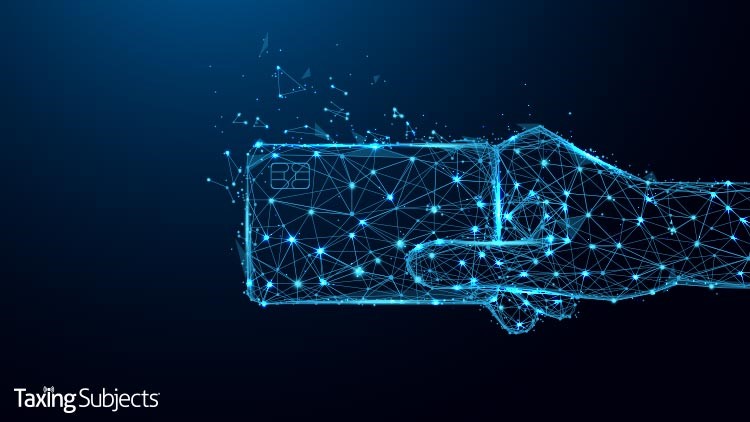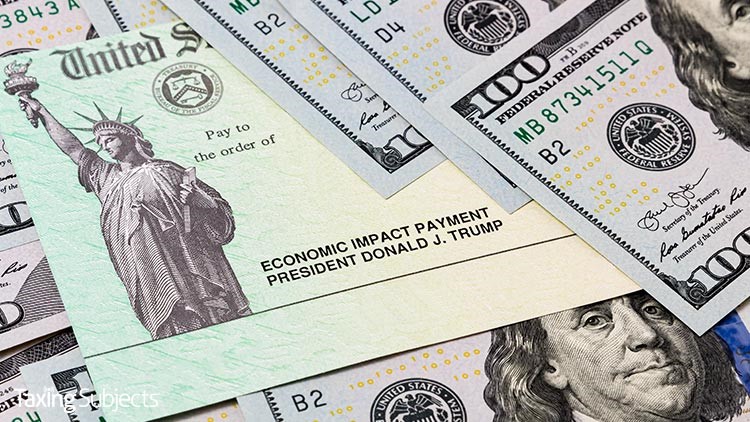by | Jan 20, 2021 | Tax Tips and News
The Internal Revenue Service has set Friday, Feb. 12, 2021, as the start of the nation’s tax season. That’s the day the agency will begin accepting and processing 2020 tax year returns.
The IRS says the February start date for individual returns will give it time to do additional programming and testing of its computer systems in the wake of tax law changes that came through on Dec. 27, providing a second round of Economic Impact Payments.
These programming changes are termed “critical” by the IRS. If filing season opened without these changes in place, the agency says there could be a delay in getting refunds to taxpayers. The changes, they stress, ensure that eligible people will receive any remaining stimulus money as a Recovery Rebate Credit when they file their 2020 tax return.
In order to speed up the refund process, the IRS recommends filing electronically with direct deposit as soon as taxpayers have the filing information they need. People can file immediately using the tax professional of their choice. They’re starting to accept tax returns now; the returns will be held and transmitted to the IRS starting on Feb. 12.
“Planning for the nation’s filing season process is a massive undertaking, and IRS teams have been working non-stop to prepare for this as well as delivering Economic Impact Payments in record time,” said IRS Commissioner Chuck Rettig. “Given the pandemic, this is one of the nation’s most important filing seasons ever. This start date will ensure that people get their needed tax refunds quickly while also making sure they receive any remaining stimulus payments they are eligible for as quickly as possible.”
Last year’s average tax refund was more than $2,500. More than 150 million tax returns are expected to be filed this year, with the vast majority before the April 15 deadline.
Some delays are the new normal
Taxpayers should keep in mind that under the PATH Act, the IRS cannot issue a refund involving the Earned Income Tax Credit (EITC) or the Additional Child Tax Credit (ACTC) before mid-February.
The law gives additional time to help the IRS stop fraudulent refunds and claims from being issued—especially to identity thieves. Therefore, the IRS expects a refund available for these credits in the first week of March if taxpayers file electronically with direct deposit and there are no issues with their tax returns.
Taxpayers should check Where’s My Refund for their individual refund date.
Overall, the IRS anticipates nine out of 10 taxpayers will receive their refund within 21 days of when they file electronically with direct deposit if there are no issues with their tax return. The IRS urges taxpayers and tax professionals to file electronically. Avoid filing paper returns wherever possible to escape delays in processing.
Tips for faster filing
To speed refunds and help with tax filing, the IRS urges taxpayers and tax pros to follow some simple steps:
- File electronically and use direct deposit for the quickest refunds.
- Check IRS.gov for the latest tax information, including the latest on Economic Impact Payments. There is no need to call.
- Those who may be eligible for stimulus payments should carefully review the guidelines for the Recovery Rebate Credit. Most people received Economic Impact Payments automatically, and anyone who received the maximum amount does not need to include any information about their payments when they file. However, those who didn’t receive a payment or only received a partial payment may be eligible to claim the Recovery Rebate Credit when they file their 2020 tax return.
- Remember, advance stimulus payments received separately are not taxable, and they do not reduce the taxpayer’s refund when they file in 2021.
Dates to remember
Enter these dates on the calendar; they’re important for this year’s filing season:
- January 29. Earned Income Tax Credit Awareness Day to raise awareness of valuable tax credits available to many people—including the option to use prior-year income to qualify.
- February 12. IRS begins 2021 tax season. Individual tax returns start being accepted and processing begins.
- February 22. Projected date for the IRS.gov Where’s My Refund tool being updated for those claiming EITC and ACTC, also referred to as PATH Act returns.
- First week of March. Tax refunds begin reaching filers claiming EITC and ACTC (PATH Act returns) for those who file electronically with direct deposit and there are no issues with their tax returns.
- April 15. Deadline for filing 2020 tax returns.
- October 15. Deadline to file for those requesting an extension on their 2020 tax returns
Patience will be rewarded
As we mentioned, the opening of filing season follows the IRS’ work to update its computer programming and to test its systems, so they can factor in the second Economic Impact Payments and other changes in the tax laws.
The changes are complex. It takes time to help ensure the proper processing of tax returns and refunds. To this, add the need for coordination with the rest of the tax software industry, and the Feb. 12 start date is the result.
The IRS says there’s simply no way around the later start: the agency simply must ensure its systems are prepared to properly process and check tax returns to verify the proper amount of EIPs are credited on taxpayer accounts—and provide remaining funds to eligible taxpayers.
And late starts to the filing season aren’t unknown. While tax seasons frequently begin in late January, there have been five instances since 2007 when filing seasons didn’t start for some taxpayers until February because of tax law changes made just before tax time.
Source: IR-2021-16
– Story provided by TaxingSubjects.com
by | Jan 16, 2021 | Tax Tips and News
The Internal Revenue Service is reminding taxpayers that today—January 15, 2021—is the deadline for making a tax year 2020 fourth quarter estimated tax payment. The goal of the press release is to prevent taxpayers who did not pay enough tax throughout 2020 from owing tax or a penalty during filing season.
The IRS says there are two methods for managing income tax payments in our pay-as-you-go system:
- Withholding from paychecks, pension payments, Social Security benefits or certain other government payments including unemployment compensation in some cases. This is how most people pay most of their tax.
- Making quarterly estimated tax payments throughout the year to the IRS. Self-employed people and investors, among others, often pay tax this way.
Even if taxpayers choose to withhold tax from their paychecks throughout the year, making an estimated tax payment can help them avoid owing tax in April due to investment-related income or under-withholding. If a taxpayer suddenly owes tax despite their financial situation having not changed, it could mean they need to adjust withholding for the following tax year.
How do taxpayers determine the amount of tax they owe?
The IRS lists three resources for determining tax liability:
- IRS Tax Withholding Estimator
- Form 1040-ES, Estimated Tax for Individuals
- Publication 505, Tax Withholding and Estimated Tax
The IRS Tax Withholding Estimator is located at IRS.gov/Individuals/Tax-Withholding-Estimator, and that page lists some simple steps taxpayers need to follow prior to using the online tool:
- Gather the most recent pay statements for yourself, and if you are married, for your spouse too.
- Gather information for other sources of income you may have.
- Have your most recent income tax return handy.
Form 1040-ES, on the other hand, includes a worksheet that taxpayers can use to calculate what they owe, and Publication 505 has information that “can be especially helpful to those who have dividend or capital gain income, owe alternative minimum tax or self-employment tax, or have other special situations.”
How do taxpayers make estimated tax payments?
There are three government-provided methods for making an estimated tax payment online:
The IRS says that those who prefer writing a check will need to “make [it] payable to the ‘United States Treasury.’” More information can be found at IRS.gov/Payments.
Source: IR-2021-13; “Tax Withholding Estimator”
– Story provided by TaxingSubjects.com
by | Jan 14, 2021 | Tax Tips and News
The Internal Revenue Service submitted the Taxpayer First Act Report to Congressional leaders this week. As the name suggests, this 253-page document is required by the 2019 Taxpayer First Act—and it’s an essential step in determining how the IRS will improve the service provided to taxpayers.
The Taxpayer First Act Report identifies a wide range of organizational changes that would improve “the taxpayer experience,” from personnel training and educational outreach to enforcement actions. Here is the list of “three integrated sets of recommendations required by law” from the press release:
- A taxpayer experience strategy that focuses on creating a proactive, convenient, seamless, personalized and effective interaction with taxpayers and the tax professional community;
- A comprehensive training strategy, a multi-faceted approach to empowering the workforce and equipping them with the skills and tools they need to advance their careers, provide high-quality service to taxpayers and enhance the taxpayer experience, and
- A recommended organizational design that will increase collaboration, coordinate strategic implementation of large-scale initiatives, enhance innovation, strengthen communications and prioritize taxpayer rights, all with the aim of improving the taxpayer experience.
The report establishes a road map for improving essentially every facet of the how the IRS ensures voluntary taxpayer compliance with tax law, and these scalable changes will understandably take time to develop and implement. While IRS Commissioner Chuck Rettig predicts the entire process to take place across 10 years, the agency notes that it will begin working on some changes this year.
Further, the Internal Revenue Service will not be alone in this work: “The IRS will continue conversations with key stakeholders and Congressional committees to secure funding and begin to work toward implementation of these recommendations over the next several years.”
Source: IR-2021-07
– Story provided by TaxingSubjects.com
by | Jan 13, 2021 | Tax Tips and News
The Internal Revenue Service is expanding just who is eligible for an Identity Protection PIN. In fact, the IRS has thrown open the gates and now says any taxpayer who can verify their identity can now get an IP PIN.
The IP PIN is a six-digit code that is known only to the taxpayer and the IRS. It helps to stop identity thieves from filing fraudulent tax returns using a taxpayer’s personally identifiable information.
“This is a way to, in essence, lock your tax account, and the IP PIN serves as the key to opening that account,” said IRS Commissioner Chuck Rettig. “Electronic returns that do not contain the correct IP PIN will be rejected, and paper returns will go through additional scrutiny for fraud.”
The IP PIN program was launched nearly a decade ago by the IRS, aimed at protecting confirmed identity theft victims from ongoing tax-related fraud.
In recent years, the IRS expanded the program to specific states where taxpayers could voluntarily opt-in to the IP PIN program. Now, that voluntary program is going nationwide.
Rules of the Game
The IRS says there are few ground rules to keep in mind about the IP PIN Opt-In program:
- This is a voluntary program.
- You must pass a rigorous identity verification process.
- Spouses and dependents are eligible for an IP PIN if they can verify their identities.
- An IP PIN is valid for a calendar year.
- You must obtain a new IP PIN each filing season.
- The online IP PIN tool is offline between November and mid-January each year.
- Correct IP PINs must be entered on electronic and paper tax returns to avoid rejections and delays.
- Never share your IP PIN with anyone but your trusted tax provider. The IRS will never call, text or email requesting your IP PIN. Beware of scams to steal your IP PIN.
- There currently is no opt-out option but the IRS is working on one for 2022.
Getting an IP PIN
Taxpayers who want an IP PIN for 2021 should go online and visit IRS.gov/IPPIN. Use the Get an IP PIN tool.
The online process requires taxpayers to confirm their identities using the Secure Access authentication process. Taxpayers have to verify their identities if they do not already have an IRS account.
See IRS.gov/SecureAccess for what information taxpayers need to be successful in signing up. There is no need to file Form 14039, Identity Theft Affidavit, to opt into the program.
Once taxpayers have authenticated their identities, their 2021 IP PIN will be revealed to them immediately. Once in the program, this PIN must be used when prompted by electronic tax returns or entered by hand near the signature line on paper tax returns.
All taxpayers are encouraged to first use the online IP PIN tool to obtain their IP PIN. Taxpayers who cannot verify their identities online, though, do have options.
Taxpayers whose adjusted gross income is $72,000 or less can complete Form 15227, Application for an Identity Protection Personal Identification Number, and mail or fax the form to the IRS. An IRS customer service representative will then contact the taxpayer and verify their identity by phone. Taxpayers should have their prior year tax return handy for the verification process.
Taxpayers who use this process will have an IP PIN mailed to them the following tax year. This is for security reasons. Once in the program, the IP PIN will be mailed to these taxpayers each year.
Those who can’t verify their identities online or by phone and are ineligible to file Form 15227 can contact the IRS and make an appointment at a Taxpayer Assistance Center to verify their identities in person. Taxpayers should bring two forms of identification, including one government-issued picture ID.
Taxpayers who can verify their identity through the in-person process will have an IP PIN mailed to them within three weeks. Once in the program, the IP PIN will be mailed to these taxpayers each year.
Identity Theft Victims are Safe
Those taxpayers who are confirmed victims of identity theft – or who have filed an identity theft affidavit because of suspected stolen-identity-refund fraud – will automatically receive an IP PIN by mail once their cases are resolved.
Current tax-related identity theft victims who have been receiving IP PINs by mail will see no change.
For more information on IP PINs, visit IRS.gov.IPPIN. The IRS is also encouraging tax professionals and employers to share information with taxpayers about the availability of an IP PIN. Tax pros and employers can print or email Publication 5367 or share IRS social media and e-poster products.
– Story provided by TaxingSubjects.com
by | Jan 12, 2021 | Tax Tips and News
It’s a busy time for the Treasury Department and the Internal Revenue Service.
They’re sending out some 8 million second-round Economic Impact Payments (EIPs) by prepaid debit card. The debit cards follow millions of EIPs already made by direct deposit and the ongoing mailing of paper checks to deliver the second batch of EIPs as quickly as possible.
Go online to check your payment status
Go online to the IRS website and bring up Get My Payment; if it shows a date that your payment was mailed, you can expect either a paper check or a debit card to arrive by mail.
An IRS release cautions taxpayers, however, that they should not be alarmed if there’s a glitch on the Get My Payment tool:
“For those taxpayers who checked Get My Payment and received a response indicating a direct deposit was to be sent to an account they do not recognize, the IRS advises them to continue to monitor their bank accounts for deposits.
“The IRS emphasizes that the information taxpayers see in the Get My Payment tool, including account numbers and potential deposit dates, may not display an accurate account number as we continue to work through updates. No action is necessary for taxpayers as this work continues; they do not need to call the IRS, their tax provider or their financial institution,” the release continues.
To speed up delivery, the Treasury Department’s Bureau of Fiscal Service is sending payments out by prepaid debit card.
The IRS and the Treasury are urging eligible people who do not get a direct deposit to watch their mail carefully during this time.
The prepaid debit card—called the Economic Impact Payment card—is sponsored by the Bureau of the Fiscal Service and is issued by MetaBank, N.A, the Treasury’s financial agent.
The Treasury does not determine who receives a prepaid debit card.
Taxpayers should keep in mind that the form of payment for this second round of Economic Impact Payments may be different than the first payment. Some people who got a paper check last time might get a prepaid debit card this time around, while some who received a prepaid debit card last time could get a paper check this time.
Moe information about these cards is available at EIPcard.com.
EIP cards are safe and secure
Taxpayers can trust that EIP Cards are safe, secure and convenient. Card recipients can make purchases online or in stores anywhere Visa Debit Cards are accepted. They can get cash from domestic in-network ATMs, transfer funds to a personal bank account – even obtain a replacement EIP card if needed without being charged any fees.
EIP Cards provide consumer protections, including measures guarding against fraud, loss, and other errors.
EIP Cards are being sent in white envelopes that prominently display the seal of the U.S. Department of the Treasury. The EIP Card has the Visa name on the front of the card and the issuing bank name (MetaBank, N.A) on the back of the card.
Each mailing includes instructions on how to securely activate and use the EIP Card.
Cards are being issued to eligible recipients across all 50 states and the District of Columbia. The IRS says residents of the western part of the U.S. are more likely to get an EIP Card.
This second round of payments comes after the successful delivery of more than $270 billion in CARES Act Economic Impact Payments in the first round.
To check the status of a payment, visit IRS.gov/getmypayment.
For more information about Economic Impact Payments, visit IRS.gov/eip.
– Story provided by TaxingSubjects.com
by | Jan 9, 2021 | Tax Tips and News
The Internal Revenue Service this afternoon announced it was working with the tax and financial industry to redirect Economic Impact Payments that were direct deposited in closed, inactive, or “unfamiliar” bank accounts.
“Some recipients may have had their payment directed to the temporary bank account established when their 2019 tax return was filed,” the IRS explains. “The IRS and tax industry partners are taking immediate steps to redirect stimulus payments to the correct account for those affected. The IRS anticipates many additional taxpayers will receive payments following this effort.”
The trouble seems to stem from two things:
- The short window for issuing payments prior to the beginning of filing season
- Federal law governing how banks handle payments sent to inactive accounts
Since Economic Impact Payments are actually an advance of the Recovery Rebate Credit (RRC) and federal law normally requires financial institutions to return money deposited in closed or inactive accounts, it initially appeared that those affected would need to claim the RRC on a tax year 2020 return to receive the stimulus money. Fortunately, it appears many of these payments will be successfully redirected.
Get My Payment, Mailed EIPs, and the Recovery Rebate Credit
The IRS release also contains additional information about direct deposits, mailed Economic Impact Payments, and the Recovery Rebate Credit:
- Direct deposits. For those who have not yet received direct deposits, they should continue to watch their bank accounts for a deposit in coming days. IRS tax industry partners are taking steps to redirect stimulus payments to the correct taxpayer account for as many people as possible. The IRS emphasizes that the information taxpayers see in the Get My Payment tool, including account numbers and potential deposit dates, may continue to display unfamiliar account numbers as the IRS continues to work through and update this issue. No action is necessary for taxpayers as this work continues; they do not need to call the IRS, their tax provider or their financial institution.
- Mail. Some people will receive their second Economic Impact Payment by mail, either as a paper check or in the form of a debit card. For people in this group, the IRS urges people to carefully watch their mail for either of these during January. Additional information is available on IRS.gov.
- Tax returns. While the IRS continues to closely work with our industry partners to quickly deliver more Economic Impact Payments, the IRS reminds eligible taxpayers who don’t receive a payment – or the full amount– that they can claim the Recovery Rebate Credit when they file their 2020 tax return. Taxpayers in this situation are urged to file electronically with direct deposit to ensure their tax refund – and their stimulus payment – reach them as soon as possible.
Finally, the IRS says that incorrect or unfamiliar information in Get My Payment does not mean your EIP was sent to someone else or stolen. “If you do not recognize the account number, it may be an issue related to how information is displayed in the tool tied to temporary accounts used for refund loans/banking products,” the release reads. “The IRS is working to address this. People do not need to complete Form 14039, Identity Theft Affidavit, or contact the IRS.”
Source: “IRS Statement — Update on Economic Impact Payments”
– Story provided by TaxingSubjects.com
